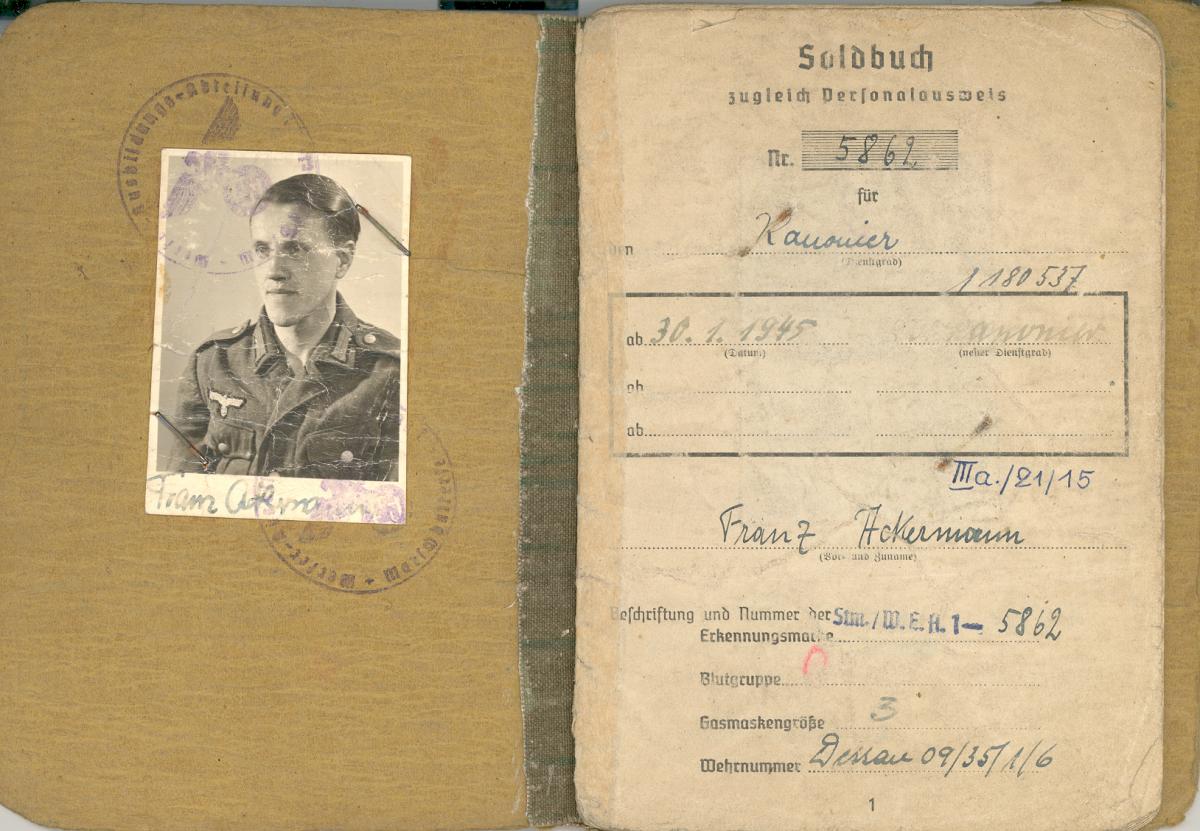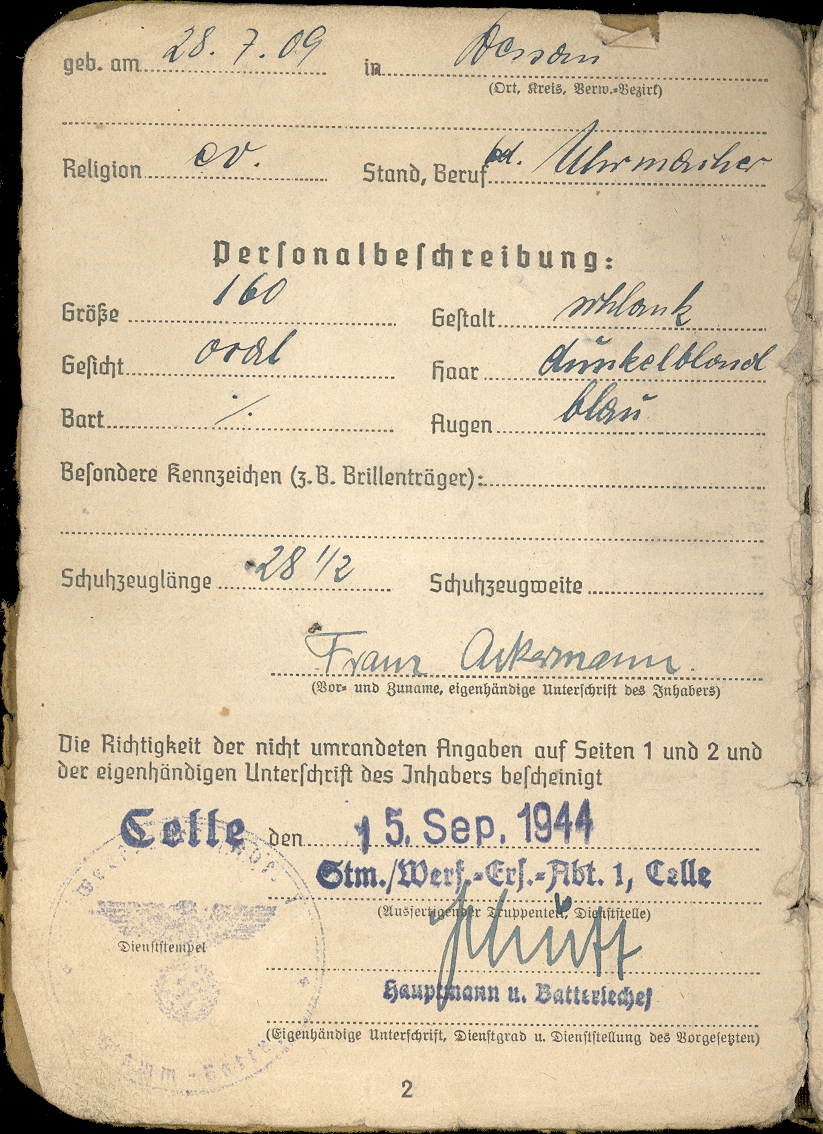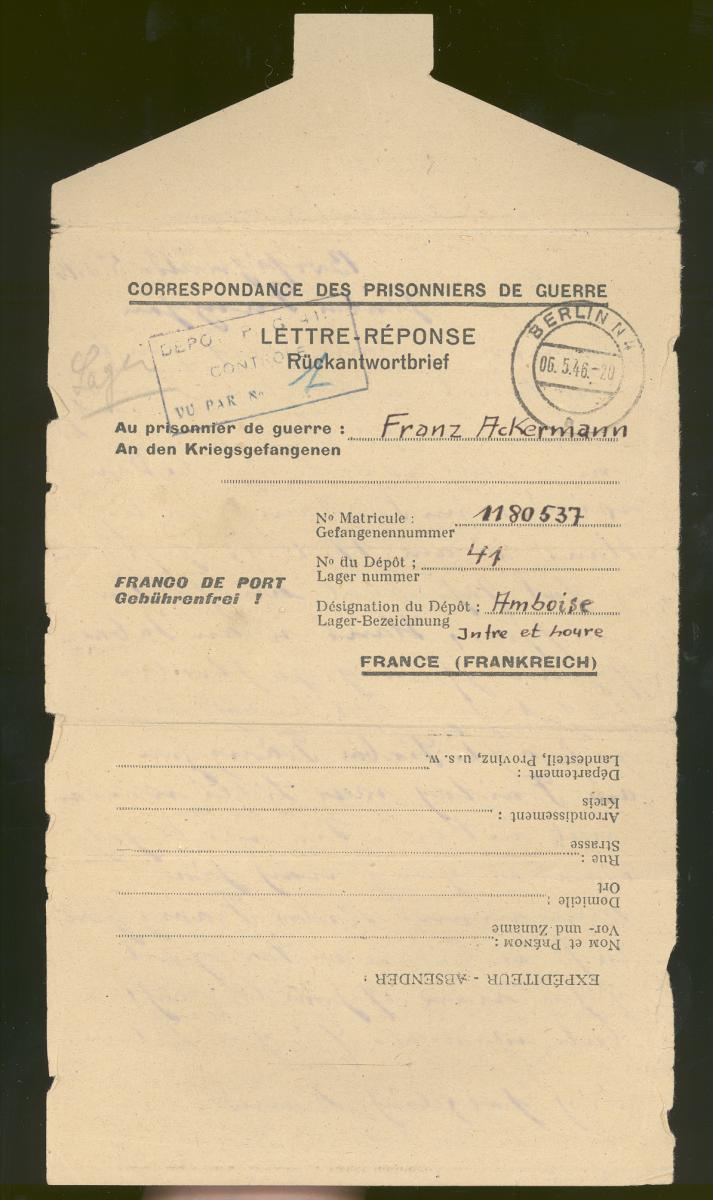Dessau Branch, Leipzig District
Roger P. Minert, In Harm’s Way: East German Latter-day Saints in World War II (Provo, UT: Religious Studies Center, Brigham Young University, 2009), 339-42.
Famous as the birthplace of the Bauhaus school of architecture, the city of Dessau is located in the old province of Saxony-Anhalt and was the capital thereof. In 1939, there were approximately 70,000 people living in Dessau, about thirty-six miles north of Leipzig.
| Dessau Branch[1] | 1939 |
| Elders | 2 |
| Priests | 1 |
| Teachers | 2 |
| Deacons | 5 |
| Other Adult Males | 8 |
| Adult Females | 25 |
| Male Children | 2 |
| Female Children | 4 |
| Total | 49 |
The East German Mission history contains a single entry regarding the small branch in Dessau, dated May 15, 1938: Walter Gerstner was appointed president of the Dessau Branch, with Franz Ackermann as first counselor.[2]
The directory of meetinghouse addresses for the mission indicated in late 1938 that the Dessau Branch held meetings at Georgenstrasse 11A.
A native of Plauen and a member of the Latter-day Saint branch there, Irmgard Fassmann came to Dessau in 1941 as a new office employee at the Junkers Aircraft Company factory. She looked for the branch and only found it when she hummed a Church hymn melody while riding the bus and thereby came to the attention of Brother Gerstner.[3]
Irmgard was surprised to see only about a dozen members at the meetings. She later wrote this description of the members in Dessau:
The church was just three rooms, and they were located at the back of an older building. The members were mostly older people, but at least we had three priesthood holders, Bro. Gerstner, Bro. Ackermann, and Bro. Quente. Gerstners was [sic] a very nice family with three little children. Bro. Quente was here as a visiting soldier, and Bro. Ackermann was a native. Soon after I came there all three men were sent to war.
Franz Ackermann was ordained a teacher in the Aaronic Priesthood in 1938. He entered the service of the Reich and was in uniform for the duration of the war. His service was outstanding, and he was promoted to first lieutenant by January 1945.
Irmgard Fassmann was likely a welcome addition to the Dessau Branch. While Franz Ackermann was still at home, the two went to the meetinghouse on Saturdays and cleaned the rooms, brought in firewood, and generally kept things in good shape for Sundays. Irmgard had many assignments, including Sunday School superintendent, chorister, Sunday School teacher, and speaker in sacrament meeting.
 Franz Ackermann’s military service record (G. Ackermann)
Franz Ackermann’s military service record (G. Ackermann)
At the Junkers Aircraft Company, Irmgard became acquainted with a nice young man named Heiner Pakendorf. He wanted to marry her, but she made it clear that membership in the Church was a requirement for marriage. He began to study the gospel, and they became engaged and planned to marry during his next furlough. Tragically, Heiner was killed in Ukraine before the couple had that chance.
Irmgard also met Gaby Feurich at the office, and the two became inseparable friends. Eventually, Gaby learned about Irmgard’s faith and was converted to the Church. Irmgard had waited for several months to invite Gaby to church “because there were just a few of us. I wanted to take Gaby one day with me to a [district] conference in Leipzig.” Apparently, Gaby was not concerned about the small number of Saints in the Dessau Branch.
The Junkers factory attracted the attention of the Allied air forces and local residents began to spend significant amounts of time in air-raid shelters as of about 1943. Irmgard found her lifestyle drastically changed and learned to dread the sirens. One evening, she and Gaby were at the Gerstner home for MIA when the sirens sounded. Before they even reached the basement shelter, they heard the airplanes and the bombs. They prayed, waited, and heard the all-clear siren two hours later. She later described the night:
What [Gaby and I] saw was so awful. The whole city was burning. . . . We couldn’t go home [through] the streets, we had to go far around the city. . . . It was just burning everywhere, it looked so sad. It took us three hours to get to the house I lived in. There the neighbors’ house was burning and flames leapt toward the house where I had my room. We both ran upstairs to my room on the third floor, the house was full of smoke, so we put scarves on our faces, . . . grabbed some clothes and a few items, and ran out again. . . . Gaby’s apartment was still all right.
The Junkers factory was severely damaged, but operations were moved into temporary facilities in a nearby forest and production continued through the remainder of the war.
 Franz Ackermann’s physical description from his military record (G. Ackermann)
Franz Ackermann’s physical description from his military record (G. Ackermann)
In order to replace the clothing and other household items she had lost, Irmgard took the train home to Plauen. She arrived just in time to experience a terrifying air raid there as well. Along with her parents, she was trapped in a bomb shelter for several hours, because the door was covered with rubble.
According to Max Gerstner Jr., the meeting rooms of the Dessau Branch at Georgenstrasse 11A were destroyed in the spring of 1945—either in air raids or by the American artillery.[4]
When we came out, we saw many dead people on the streets—many houses were burned and exploded. What a terrible sight. When we came to my parents’ house only half of the house was still standing, the other half was gone. I looked up to the second floor where we lived, and there was the coat rack with my father’s Sunday suit hanging, and his golden pocket watch on a golden chain was hanging down. I [could] still see it there in the hallway.
Back in Dessau, Irmgard experienced the entry of the American army. Just after the war ended, she took a bicycle and started for home. Hoping to avoid having her bicycle stolen, she let the air out of the tires and pushed it all the way to Zwickau, nearly 130 miles due south. She left Monday morning and arrived there safely on Friday. She was next escorted home to Plauen by her uncle, District President Walter Fassmann of Zwickau, along with President Sellner of the Plauen Branch.
 Franz Ackermann wrote this letter to his wife from a French POW camp. (G. Ackermann)
Franz Ackermann wrote this letter to his wife from a French POW camp. (G. Ackermann)
Apparently the French authorities felt it very important to determine the political leanings of their POWs. This is evident from the case of Franz Ackermann, as reflected in the letters written to him in captivity by his brother, Walter, back in Dessau. For example, on April 22, 1946, Walter wrote the following:
In the third letter you will receive the proof that you were an anti-fascist, i.e., an opponent of the Hitler [Nazi] Party. After all, you constantly gave money to the support of the underground. I visited the SED [Socialist Unity] party offices again today in order to get the papers. Those papers must first be examined by the SED. Then I will send them to you and you must have the camp commandant look at them.[5]
It is not known whether the papers were sent or whether they were used by Franz Ackermann to secure an early release from the French POW camp.
In Memoriam
The following member of the Dessau Branch did not survive World War II:
Marie Charlotte Weise b. 28 Oct 1868; dau. of Karl Weise and Louise Berger; m. —— Fleischer; d. 12 Jun 1942 (CHL CR 375 8 #2459, 1388–89)
Notes
[1] Presiding Bishopric, “Financial, Statistical, and Historical Reports of Wards, Stakes, and Missions, 1884–1955,” CR 4 12, 257.
[2] East German Mission Quarterly Reports, 1938, no. 20, East German Mission History.
[3] Irmgard Fassmann Messina Schwarz, autobiography (unpublished), 9; private collection.
[4] Max Gerstner, telephone interview with the author, June 3, 2006.
[5] Walter Ackermann to Franz Ackermann, letter, April 22, 1946; private collection; trans. the author.
